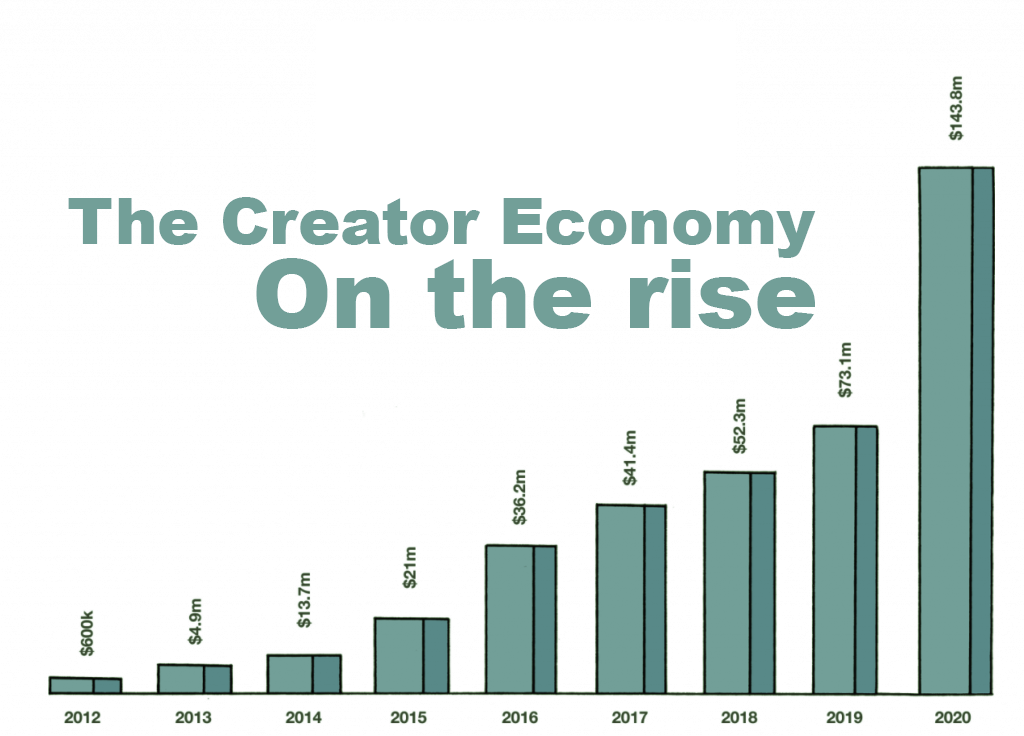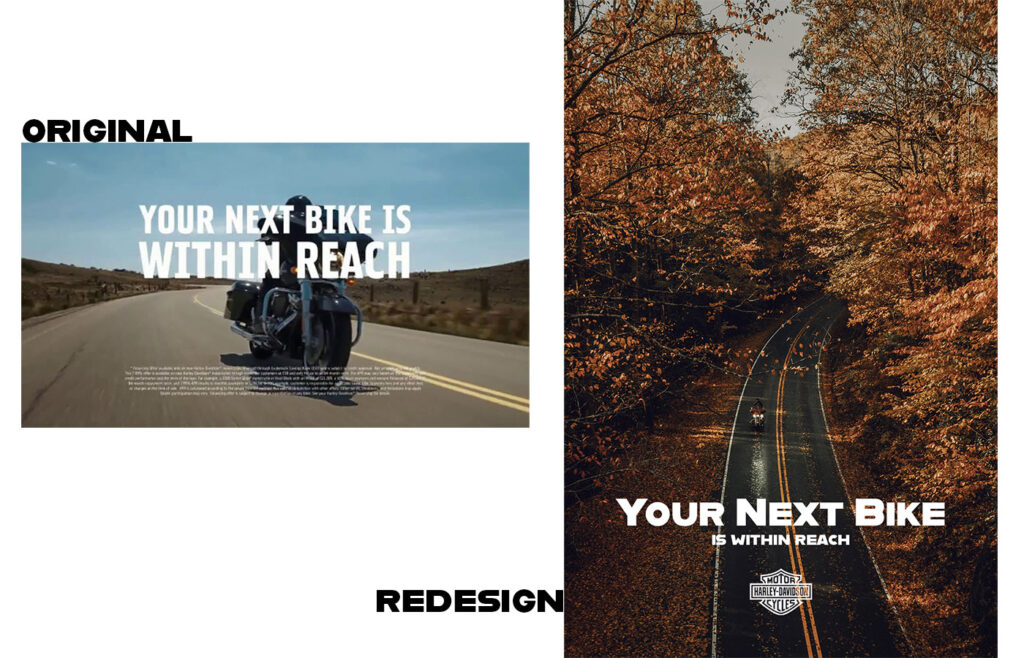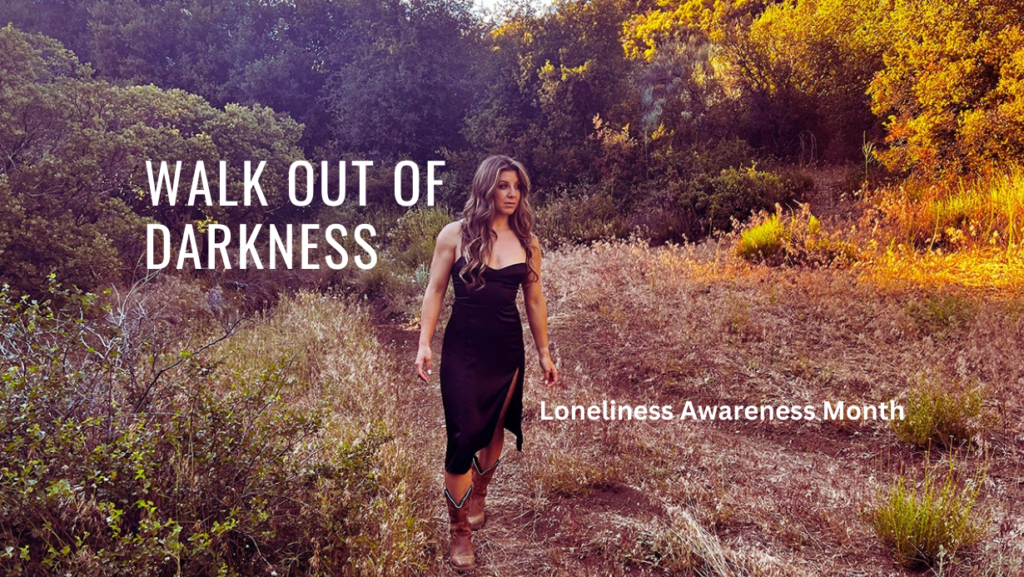Introduction to Visual Communications
CREATIVE CLASS ONE

The Importance of Visual Communication
Welcome you crazy wonderful creatives.
You’ve wielded the power of the lens to tell stories, to capture moments, and to share perspectives. Photography, in its essence, is about seeing the world and showing it to others. But what if I told you that in this ever-evolving world, you’re on the cusp of something even bigger?
Welcome to the era of the solopreneur.
Consider this: the stories you tell don’t have to be limited to a still frame. While a picture is worth a thousand words, imagine the narratives you could weave when you incorporate design, writing, and motion into your repertoire.
Now, you might think, “But I’m a photographer. Why venture into these areas?” And that’s a fair question.
The answer lies in the world around us. The modern audience, your audience, craves multidimensionality. They’re scrolling through platforms filled with visuals, written content, and videos, all vying for their attention.
By integrating design, you could take your visuals and create compelling layouts, branding, or even merchandise. Writing allows you to narrate the stories behind your shots, connecting on a deeper level. And motion? It brings life to your stories, adding layers of depth and emotion.
Embracing these skills isn’t about leaving behind photography. Instead, it’s about amplifying it. It’s about becoming a force of one, a solopreneur, who not only captures moments but crafts experiences.
The landscape of content is vast, and those who adapt, those who blend their skills, stand out. They create ripples, then waves, in this ocean of digital media.
The exciting part? You don’t have to be perfect. Starting small, experimenting, failing, learning – it’s all part of the journey. What’s important is the willingness to evolve, to be curious, to take risks.
So, photographers, dare to step out of the frame. The world is not just waiting for your pictures; it’s waiting for your stories, your designs, your motion. The solopreneur in you has the power to change the game.
Are you up for the challenge? The canvas is vast, and your toolkit is expanding. Dive in, make your mark, and lead the way in this remarkable evolution.
The Business Case for Expanding Creative Skills
The creative industry is as vibrant and dynamic as ever, but there’s a paradigm shift happening. No longer can one trick ponies ride the wave of success for long. Today, there’s a compelling business case for broadening your skill set within the creative space, and here’s why:
- Diversification Equals Stability: Just like an investment portfolio, diversifying your skills means you’re not reliant on one source of income. By offering a wider range of services, you can navigate market fluctuations better and find multiple revenue streams. In uncertain times, this can be a game-changer.
- Meet the Demand for Full-Stack Creatives: Companies, especially startups and SMEs, are on the lookout for ‘full-stack’ creatives. These are individuals who can photograph a product, design the promotional material, write the copy, and perhaps even create a teaser video. By being a one-stop solution, you increase your market appeal exponentially.
- Enhance Collaborative Potential: When you understand multiple facets of the creative process, you can communicate more effectively with other team members, leading to better end results. Knowing the basics of, say, design, can help a writer craft content that complements visual elements seamlessly.
- Stay Relevant in a Rapidly Changing Landscape: The digital realm evolves at breakneck speed. New platforms and mediums emerge regularly. By expanding your skills, you stay ahead of the curve, ensuring you’re never left behind.
- Personal Growth and Satisfaction: Beyond the business aspect, there’s immense personal satisfaction in learning and mastering new skills. It keeps the creative juices flowing, reignites passion, and opens doors to projects you might never have considered.
- Cost Efficiency for Clients: Let’s face it – hiring multiple specialists can be costly for businesses. If you can offer a range of services at a competitive price, you become a more attractive option for clients looking for comprehensive solutions without breaking the bank.
- Future-Proofing Your Career: Automation and AI are on the rise, but the uniquely human touch in creative endeavors remains irreplaceable. By broadening your skill set, you’re not just expanding your offering; you’re ensuring longevity in a world of rapid technological advancements.
While specialization has its merits, the current market landscape leans favorably towards creative polymaths. It’s a blend of practicality and foresight. The more arrows you have in your quiver, the more prepared you are for whatever challenges the future might throw your way.
Welcome to the Creative Class
Let’s kick this thing off:
What you say matters.
But it’s how you show it that matters most.
In today’s economy, visuals are the currency.
They buy attention.
They pay in engagement.
Think about it.
In business, the first handshake, the first impression, the first yes… and it’s all visual.
It’s all about what people see and how they perceive it.
Let’s get you to own that. That’s mission number one.
The Creative Economy is the fastest-growing sector.
The Core Principles of Visual Communication
So, how do we own the visual?
First, we dive into simplicity. Strip down to the essentials. Say more with less. Your audience is busy, their attention is valuable. Respect that.
Second, we talk about balance. It’s about harmony. Like a well-composed photograph. The elements, the colors, the typography – they all need to sing the same song.
Third, we’re hitting on focus. Where does the eye go? What does it see first, second, third? Guide your audience, don’t leave them lost.
Finally, we’re covering consistency. This isn’t a one-off game. It’s a marathon. Keep the visuals consistent. The tone, the style, the elements. They should tell your story.

Applications in Business
Then, let’s look at the real world.
Branding, marketing, product design, social media. Visuals rule these realms. They’re the knights in the boardroom, the queens on the chessboard. How can you apply the principles? Where can you make an impact? Let’s explore.
The Tools of the Trade
Time to get our hands dirty.
What tools should be in your visual communication toolbox? Photoshop, Illustrator, Lightroom, Canva. We’re talking software, but we’re also talking mindset. The right mindset is your most powerful tool.
Visual Communication Projects
The final deliverables.
We will have assignments each week in Photography, design, motion, and digital services.
- Portfolio pieces in photography, design, and motion
- Graphic Design: Printed materials from flyers to your own book.
- Web Design so you can create your own website and one for a client if needed
- Graphic Assets: Logos, marketing materials
- Email Marketing Campaign: Set up for you, and you can set one up for a client
- Motion Graphics: From Social Media to personal marketing, making things move is very important
Projects designed to challenge you, to stretch you. To take you from knowing to doing.
Because in the end, the world doesn’t reward you for what you know.
It rewards you for what you do.
Buckle up. This is your journey. It’s going to be challenging. It’s going to be exciting. But most importantly, it’s going to be transformative. Your visuals will speak volumes. Your art will connect. Let’s make it happen. Let’s own the visual.
Module One:
Assignment 1: The Power of Simple
Find an advertisement, either print or digital, that you think is overly complicated.
Re-design it.
Make it simpler.
Make it clearer.
EXAMPLE:
Find an ad on Google, or in a magazine and print it out.
Do a self-assessment on the ad.
How can it be made cleaner or less cluttered?
Use an image from Unsplash that could work better, and lay the ad out with similar fonts and words, but with an image you feel is less complicated or cluttered.

Assignment 2: Balancing Act
Take a snapshot of your everyday environment.
It could be a room in your house, a view from a window, a bustling street corner.
Now, turn it into a graphic representation, a visual narrative.
Pay attention to balance.
Are all elements harmoniously co-existing?
EXAMPLE:
Look for balance in the photograph.
Light vs dark
Subject vs background.
Seek images that seem to balance themselves in the frame.
Using cropping, re-framing, light, dimension… any and all tools at your disposal to create an image that looks balanced.
Now take that image and make it into a graphic by using color, graphic elements like lines, circles, or squares or whatever you come up with.

Hose on the porch.
Assignment 3: Directing the Eye
Choose a social media post from a business you admire.
Analyze it.
Where does your eye go first, second, third?
Is the hierarchy clear?
Is there a path?
Now, create your own social media post.
Guide us.
We’ll follow your lead.
EXAMPLE:
Open Canva or Adobe Express and choose to make a similar post to what you are examining.
Using elements, line, type, and a photo, recreate the ad and keep our eyes directed to the subject.

Assignment 4: Consistency is Key
Pick a brand with a strong visual identity.
Analyze their last 10 posts on any platform.
Identify the elements that make them consistent.
Is it the color scheme?
The typography?
The image style?
Now, create your own visual identity.
Design 3 posts that show us what consistency looks like.
EXAMPLE:
Choose an iconic brand: Apple, Coke, Taco Bell, etc…
Create a new ad that fits the look and feel of their brand.
Watch for color consistency, density (how much is going on in the ads) and subject matter.
Use one of their headlines if needed.

Assignment 5: The Ultimate Visual Story
This is your final act.
Create a visual story that represents your personal brand.
It could be an infographic, a series of photos, a comic strip, or anything else visual.
But remember, it should tell a story.
A story about you.
A story that connects, engages, and resonates.
Make it count.
EXAMPLE:
Think of this as your first brand image for yourself.
Are you a mnimalist?
Are you a classicist?
Are you just having fun and haven’t decided yet?
S’all good, folks.
This three-panel ad is about your view of anything; Potato Chips, Chevy’s, Beer, Tacos…

IDEAS AND LINKS
The Best Ads of All Time
Determining the “best” ads in the world is subjective and can vary depending on individual preferences, cultural contexts, and trends. However, I can mention a few iconic and successful ad campaigns that have made a significant impact globally:
- Apple’s “1984” Super Bowl Ad: Created by Apple to launch the Macintosh computer, this ad is often regarded as one of the greatest commercials ever made. Directed by Ridley Scott, it aired during the 1984 Super Bowl and was a cinematic depiction of a dystopian world shattered by a young woman wielding a sledgehammer, representing the revolutionary impact of the Macintosh.
- Coca-Cola’s “Share a Coke” Campaign: This campaign involved printing popular names on Coca-Cola bottles and cans, encouraging people to share a Coke with friends and family. It became a massive global hit and encouraged user-generated content by prompting people to share photos with their personalized bottles.
- Dove’s “Real Beauty” Campaign: Dove’s campaign challenged traditional beauty standards by celebrating diversity and showcasing real women instead of models. It aimed to promote self-esteem and body positivity, striking a chord with many people.
- Nike’s “Just Do It” Campaign: Launched in 1988, this campaign has become synonymous with Nike and its ethos of determination, athleticism, and personal achievement. It has featured numerous athletes and celebrities, emphasizing the idea of pushing one’s limits.
- Old Spice’s “The Man Your Man Could Smell Like”: This humorous and quirky campaign rebranded Old Spice as a modern, attractive brand. The ads featuring Isaiah Mustafa became viral hits and revived the brand’s image.
- Google’s “Parisian Love” Ad: Google’s simple yet heartwarming ad showcases the journey of a relationship through Google searches. It effectively conveys how Google can be a part of the important moments in people’s lives.
- John Lewis Christmas Ads: The UK department store’s annual Christmas ads have become a tradition and are eagerly awaited each year. They tell emotionally compelling stories that connect with audiences during the holiday season.
- Volvo’s “Epic Split” with Jean-Claude Van Damme: This Volvo Trucks ad features Jean-Claude Van Damme performing an impressive split between two moving trucks. It highlighted the precision and stability of Volvo’s dynamic steering system in a visually stunning way.
Remember that what makes an ad “best” can vary based on factors such as creativity, impact, cultural relevance, and effectiveness in achieving the brand’s goals.
75 brilliant and inspirational advertisements that will change the way you think
LÜRZER’S ARCHIVE
The creative resource for advertising professionals worldwide
COHORT MEMBERS GO HERE FOR MORE
Remember, these assignments are not just tasks. They’re opportunities.
They’re chances for you to flex your visual muscles.
To make a statement.
To tell a story.
So go ahead, take the stage. We’re all eyes.
DISCUSSION TOPICS:
Simplicity is Not So Simple
What challenges did you face while trying to simplify a complex advertisement?
Did the message become clearer or did something get lost in the translation?
Let’s unpack this idea that less is more, but also, less is hard.
The Beauty of Balance
Share your experience transforming a real-life scene into a balanced graphic representation.
Was it easy to find harmony?
How did you decide what to include and what to leave out?
Balance is a dance.
Let’s talk about how we danced.
Being a Visual Guide
In creating a social media post, how did you decide the hierarchy of elements?
How do you know where the eye should go first, second, third?
Guiding the eye is like directing a movie.
Let’s discuss our directorial debuts.
The Art of Being Consistent
How did analyzing a brand’s visual consistency influence your own design decisions?
Did you find it restricting or liberating to maintain a consistent visual identity?
Consistency is a commitment.
Let’s converse about the promises we made and kept.
Stories That Stick
What was it like telling your personal brand story through visuals?
Did you find it difficult to make it connect, engage, and resonate?
Telling stories is an art. Sharing them is a gift. Let’s unwrap our gifts and see what’s inside.
Remember, discussions aren’t just about talking.
They’re about listening.
They’re about understanding.
They’re about learning from each other.
So let’s dive in, let’s explore.
The conversation starts now.
How does visual communication impact the perception of a brand?
Visuals are extremely powerful.
They’re instant.
They’re visceral.
Within seconds, your audience forms an opinion, a perception.
All thanks to what they see.
That’s the magic of visual communication.
And when it comes to your brand, that magic can make all the difference.
Making First Impressions Count
First impressions.
We all know they matter.
But in the world of branding, they’re everything.
Your logo, your colors, your images, they’re the first hello, the first handshake, the first impression.
It’s a blink-and-you-miss-it moment.
But it’s in this moment that your brand lives or dies.
Telling Stories Without Words
Every brand has a story.
Your visuals, they’re the storytellers.
They communicate your values, your mission, your essence.
All without saying a single word.
That’s power.
That’s impact.
That’s visual communication.
Building Trust Through Consistency
It reassures.
It validates.
Every time your audience sees the same colors, the same style, the same feel, they recognize you.
They remember you.
And most importantly, they trust you.
PHOTOGRAPHY ASSIGNMENT FOR BOOK BUILDING.
Let’s kickstart this class with an inspiration injection, shall we?
You are all photographers.
You’re storytellers.
Every image holds a tale, a moment, an emotion.
But now, we’re looking to go deeper.
To find that ‘wow’ that makes viewers stop, stare, and think.
The Assignment: “Journey of Light”
Details:
- Chase the Light:
From dawn’s first glimmer to the night’s final breath.
Capture the journey of light in its many forms.
How does it evolve?
How does it play? - Incorporate Shadows:
Darkness isn’t your enemy.
It’s your dance partner.
How do light and shadow play together?
Show the contrast. - Human Element:
Introduce a human subject into your frame.
Let light interact with them.
Highlight.
Silhouette.
Glint in the eye.
Whatever it takes! - Mood & Emotion:
Don’t just click.
Feel.
What emotions does the changing light evoke?
Let your image breathe that feeling. - Hot-Shot Challenge:
Ditch the digital.
Go analog.
Film, if you dare.
Capture that raw, organic feel.
Inspiration isn’t about the best equipment or the most exotic location.
It’s about the eyes behind the lens.
It’s about heart. It’s about soul.
Think about the places you’ve been, the people you’ve met.
Think about the stories you haven’t told yet.
Let the light guide you.
Let your lens be your pen and your brush..
Now, go out and feel the world through your lens.
Let the journey of light inspire you.
What You’ll Learn
Key Takeaways:
2. The core principles of visual communication include simplicity, balance, focus, and consistency.
3. Visual communication plays a significant role in various aspects of business, such as branding, marketing, product design, and social media.
4. The tools of the trade for visual communication include software like Photoshop, Illustrator, Lightroom, and Canva, as well as having the right mindset.
5. Visual communication projects can include photography, design, motion, and digital services, with the goal of challenging and transforming participants.
6. The module includes assignments that focus on simplicity, balance, directing the eye, consistency, and creating a visual story.
7. Discussions are encouraged to explore challenges and experiences related to simplifying complex advertisements, finding balance in graphic representations, guiding the eye in social media posts, maintaining visual consistency, and telling personal brand stories through visuals.
8. Visual communication has a significant impact on the perception of a brand, as it shapes first impressions, tells stories without words, and builds trust through consistency.
9. The module aims to teach participants how to analyze visual communications, evaluate their effectiveness in connecting with people, and enhance their visual skills for success.
MODULE 1
RESOURCES
FACEBOOK GROUP
The Class Intent
Portfolio Ideas:
Assignment Ideas:
Introduce yourself to a small retailer.
A flower shop, coffee shop, or boutique. Offer to create some assets for them for free. The access is more than enough payment for you, and you need the work in your portfolio.
Create an Instagram Story, 5 photographs, and a motion graphic.
Work with a community group: Theater, parks commission, clean up.
Create a banner for them as well as a story for their blog. Make portraits of the members, and turn them into a small brochure.
Chat with a local charity to find out what they may need.
Create web graphics and photographs, as well as a pitch-deck and Instagram story.
Assignment Ideas:
Small product.
Service providers.
Small retail shops.
Solopreneurs.
All need the kind of work you are doing, so it becomes a win-win.
WHAT TO WORK ON THIS MONTH
You are in the first module group (1-6) and we are laying the foundation for the rest of the class.
This is the time to begin working on software and tech you may not be familiar with. There is a list above, and there will be many more added to it. You certainly do not have to know all of them, they are suggestions for different genres of work.
For instance, for video, you could choose Premiere, DaVinci, iMovie, Capcut, Canva, Adobe Express, Pixelmator or whatever product you are using and comfortable with.
If you are NOT familiar with making videos, take a look at what you want to do and where you want to be in a year with your video.
For instance, you want to do Facebook / Instagram video work for small and medium businesses.
My suggestion would be Canva, Adobe Express, Pixelmator, and Capcut.
If you want to be doing longer-form videos like training or documentary videos, I would suggest DaVinci Resolve, Premiere, or Final Cut Pro. These have higher learning curves but are certainly worth learning.
If you are looking at animating graphics, the big daddy in that arena is After Effects. It is not an easy program, but you can become proficient in a few months.
That said, you can animate text and graphics at Canva, Adobe Express, Pixelmator, and Capcut.
The same with all of the different work that you do.
If you are not a Photoshop user and don’t know if you need that much power, try Pixelmator. A really amazing little program that handles RAW files, color correction, sharpening, and almost anything you need to do.
THIS MONTH…
Get used to some new software that you are not familiar with.
